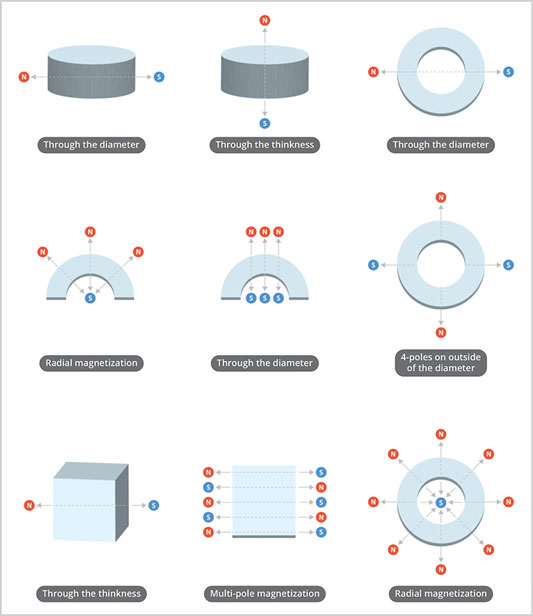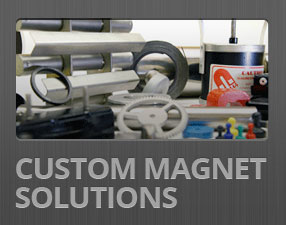Magnets come in two broad patterns.
- Isotropic magnets are indifferent. They have no preferred direction and are often called non-oriented. These are weaker than oriented magnets but can be magnetized in any pattern a buyer wants.
- Anisotropic magnets have better magnetic properties in a particular direction. A magnetic field applied during the manufacturing process orients the material and improves the performance potential of the magnet. The best magnetic performance comes when the magnet is magnetized in the direction of the grain.
Go with the grain – or don’t
Modern magnet materials have a grain, similar to wood, that can channel energy best in a particular direction. With wood the grain transports nutrition; with magnetic materials the grain transports magnetic potential.
 In the business we call this the orientation direction, easy axis or just axis.
In the business we call this the orientation direction, easy axis or just axis.
Choose the right magnet
Consider these things before making your purchase to ensure you get the right magnet for your job.
- What size of magnet do you need?
- What application will this be used for?
- For example, moving or holding.
- What conditions will the magnet be used in?
- Hot or cold, indoors or outdoors?
- What shape of magnet will work best for your application?
- Bar, rod, block, horseshoe, disc, ring, flexible?
- What material do you need?
- Ceramic, rare earth, electromagnet, flexible strip or sheet, alnico?
- Magnetic strength
- In gauss or pounds of holding force.
Whatever your magnetic needs, Jobmaster has you covered. Contact us today to talk about your application and let us help you find the magnets you need.













